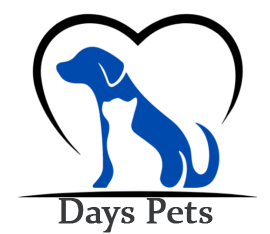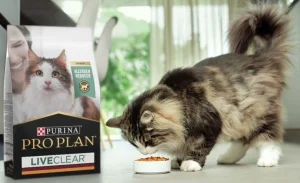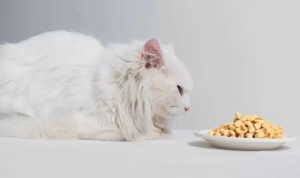In recent years, grain-free cat food has gained immense popularity among pet owners seeking to provide the best possible nutrition for their feline companions. Marketed as a more natural, species-appropriate diet, grain-free formulas eliminate ingredients like corn, wheat, and rice in favor of high-quality animal proteins and alternative carbohydrate sources. But is grain-free truly better for your cat? Let’s explore what grain-free cat food offers, who benefits most from it, and how to choose the right grain-free formula for your furry friend.
What Is Grain-Free Cat Food?

Simply put, grain-free cat food refers to any cat food formula that does not contain grains such as:
- Corn
- Wheat
- Rice
- Barley
- Oats
- Rye
Instead, these recipes rely on alternative carbohydrate sources like sweet potatoes, peas, lentils, or chickpeas, combined with higher amounts of animal-based proteins. Many grain-free formulas aim to mimic a cat’s natural, carnivorous diet—focusing on meat and eliminating unnecessary fillers.
Why Do Some Cats Need Grain-Free Food?
While not all cats require a grain-free diet, certain situations or health conditions may make it the preferred option:
Food Sensitivities or Allergies
Some cats may have sensitivities or allergies to grains like corn or wheat, leading to symptoms such as:
- Vomiting
- Diarrhea
- Itchy skin or excessive grooming
- Ear infections
- Lethargy
Switching to a grain-free diet often helps alleviate these symptoms, especially if the food is also free of artificial additives and common allergens.
Digestive Issues
Cats with sensitive stomachs may benefit from grain-free formulas, as they often contain easier-to-digest carbohydrates like sweet potatoes and pumpkin, along with limited ingredient profiles.
Weight Management
Grain-free cat foods typically have higher protein content and lower carbohydrate levels compared to grain-inclusive varieties. This balance can help promote lean muscle maintenance and reduce the risk of excess weight gain.
Benefits of Grain-Free Cat Food
Supports a Carnivore’s Natural Diet
Cats are obligate carnivores, meaning they require animal-based proteins to thrive. Grain-free recipes often prioritize real meat (chicken, turkey, fish, beef) as the first ingredient, aligning with their natural dietary needs.
Higher Protein Content
Grain-free foods generally contain more animal protein, supporting:
- Lean muscle development
- Energy levels
- Healthy skin and coat
- Strong immune function
Reduced Risk of Grain Allergens
Removing grains eliminates common potential allergens like corn and wheat, which may benefit cats with food sensitivities.
No Unnecessary Fillers
Many grain-inclusive formulas use grains as inexpensive fillers. Grain-free foods tend to avoid these, offering more nutrient-dense ingredients.
Improved Digestion
By using alternative carbohydrate sources and often limiting the number of ingredients, grain-free foods can be gentler on sensitive stomachs.
Popular Grain-Free Cat Food Brands
Several reputable brands offer high-quality grain-free cat food options, including:
- Blue Buffalo Wilderness
- Wellness CORE
- Merrick Purrfect Bistro
- Taste of the Wild
- Nulo Freestyle
- Instinct by Nature’s Variety
- Canidae Grain-Free PURE
These brands focus on high protein levels, quality animal-based ingredients, and natural, grain-free recipes.
Key Ingredients to Look For in Grain-Free Cat Food

When selecting the best grain-free formula, pay attention to:
High-Quality Animal Proteins
Ensure real meat or fish is listed as the first ingredient (e.g., chicken, salmon, turkey).
Alternative Carbohydrates
Look for nutrient-rich alternatives like sweet potatoes, peas, lentils, or chickpeas instead of grains.
Healthy Fats
Ingredients like salmon oil or chicken fat provide essential omega fatty acids for skin, coat, and overall health.
Limited Ingredients
For cats with sensitivities, limited-ingredient diets (LID) reduce the number of potential allergens.
Vitamins and Minerals
A balanced formula should include essential vitamins (A, B, E, D), taurine (for heart and eye health), and chelated minerals.
Things to Consider Before Switching to Grain-Free Cat Food
While grain-free cat food offers numerous benefits, it may not be necessary—or ideal—for every cat. Here are a few considerations:
Veterinary Guidance
Always consult your veterinarian before making significant dietary changes, especially if your cat has pre-existing health conditions.
Balanced Nutrition
Ensure the grain-free formula you choose is labeled complete and balanced, meeting AAFCO standards for feline nutrition.
Taurine Levels
Past concerns about grain-free diets and taurine deficiency (linked to heart issues) primarily arose in dogs, but it’s always essential to check taurine content in your cat’s food.
Cost
Grain-free foods can be more expensive than grain-inclusive options due to the higher quality of ingredients and absence of fillers.
Transitioning to Grain-Free Cat Food
To avoid digestive upset, transition your cat gradually:
- Days 1–3: Mix 25% new food with 75% old food.
- Days 4–6: Increase to 50% new food.
- Days 7–9: Increase to 75% new food.
- Day 10: Fully switch to the new food.
Monitor your cat’s appetite, stool quality, and overall health during the transition.
Grain-free cat food offers a high-protein, nutrient-dense option that aligns closely with your cat’s natural carnivorous diet. Ideal for cats with grain sensitivities, digestive issues, or owners looking for a cleaner, filler-free food choice, grain-free formulas can support long-term health when chosen carefully. Always consult your vet to determine if grain-free is the right fit for your feline’s individual needs, and choose reputable brands that prioritize real, wholesome ingredients.




